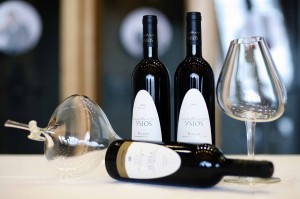
In times of recession, it is always surprising to find businesses that have survived – indeed thrived – against the odds. The steady closure of smaller stores has left many Spanish town centres struggling to remain vibrant and in such a climate, niche is everything if you are hoping to capture the market.
The main street of the Basque capital Vitoria’s old quarter throws up one such case: Martin’s Bodega is 15 square metres of wall-to-wall wine. English owner Martin Beacham opened the shop in 2009 just as the recession was beginning to hit. At such a delicate time, it was a straightforward matter of sink or swim. Three years later, business is steadily thriving, though most clients are from the local area.
Arnau Estrader has enjoyed similar success. He opened his first “vinoteca” ‘Animá’ (a wine-shop combined with tasting centre and restaurant) in the Guipuzcoan coastal town of Zarautz in May 2010. In December 2011, he expanded the business, moving it to a larger venue on the town’s main thoroughfare. Since then, others have followed suit and two more vinotecas have opened in Zarautz.
Like Beacham, Arnau Estrader is not an oenologist, but a lover of wines. At the tender age of 25, however, he has twice reached the final of Spain’s ‘Golden Nose’ competition for sommeliers, in 2011 and again this year.
It’s ironic that Arnau’s love for wine grew among the vineyards of his home town of Corbera de Llobregat in Catalonia, a town that now boasts “more housing estates than anywhere else in Spain” he says. As the real estate bubble inflated and the fever to build took hold, the vineyards were sacrificed. But now the bottom has fallen out of Spain’s construction industry and the wine business is riper than ever.
A trendy topic
The media has played its part in wine’s rising star. Journalists rarely fail to cover the many wine-tasting events and competitions which are held across the country. Such coverage has helped make it fashionable, and an upbeat topic in depressing times.
As a result there is a perceivable narrowing of the gap between ordinary wine drinkers and so-called experts. The rising popularity of wine conflicts somewhat with the stereotype of Spaniards as innate connoisseurs of their country’s most popular drink. In reality, although wine has been enjoyed in a social context for centuries, people typically stuck to the same brands – either through lack of access or unwillingness to change.
“Previously, bars always offered the same wines,” says Arnau Estrader. “Crianza, white, probably Rueda, and [in the Basque Country] Txakoli. If you asked for something different they looked at you funny.”
Estrader’s aim has been to inject variety into people’s wine-drinking, which he has achieved with a palpable degree of success: “People are beginning to try out different brands, becoming more open to trying wines from different regions… though you still get a lot of older people who stick to the same four brands of Rioja – and that is a region with over 40 bodegas… Having an open mind is fundamental.”
Value for money
Wine-drinking remains a relatively cheap pastime in Spain given that nearly every year supply easily outweighs demand. Though the country’s overall production of wine has fallen over the last few years, output is still substantial. In 2011, total production was 34.3 million hectolitres, twice the amount produced in the whole of the United States. Add to that the high level of competition, not to mention 0% excess duty, and prices inevitably remain low.
And crucially, exports are healthy. Last year, over 2 billion litres of Spanish wine were sold overseas, an increase of 16.7 percent on the previous year. The price was on average 7.6 percent cheaper than in 2010, the equivalent of one euro less per litre.
Low prices pose significant competition to wines originating from other sources, not least those of the country to which they are exported. A search on the internet for commercial sites selling wines in the US reveals a number of on-line vendors offering Spanish varieties for under $10. Meanwhile, it is difficult to find any US wines going for less than $20.
The relative cheapness and accessibility of Spanish wine help explain the recent mini-boom. An increasingly open attitude to new wines among younger Spaniards, combined with persistent media coverage, has also succeeded in making wine fashionable.
Here in the Basque Country, meanwhile, is where vinotecas have really found their market, in great part thanks to a highly sociable culture. Euskadi is notoriously rainy but no amount of precipitation can stop Basques from going out and enjoying a drink with friends. Whether under a cloud of economic collapse or escaping from a full-on storm, there is little that can separate a Basque from his glass of wine.
Leave a Reply
You must be logged in to post a comment.